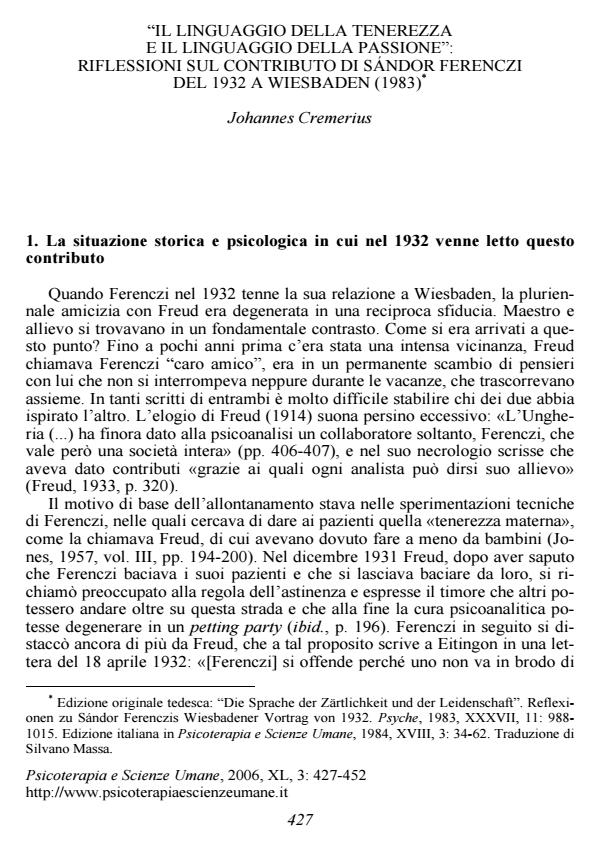Il linguaggio della tenerezza e il linguaggio della passione: riflessioni sul contributo di Sàndor Ferenczi del 1932 a Wiesbaden (1983)
Titolo Rivista PSICOTERAPIA E SCIENZE UMANE
Autori/Curatori Johannes Cremerius
Anno di pubblicazione 2006 Fascicolo 2006/3
Lingua Italiano Numero pagine 26 P. Dimensione file 185 KB
DOI
Il DOI è il codice a barre della proprietà intellettuale: per saperne di più
clicca qui
Qui sotto puoi vedere in anteprima la prima pagina di questo articolo.
Se questo articolo ti interessa, lo puoi acquistare (e scaricare in formato pdf) seguendo le facili indicazioni per acquistare il download credit. Acquista Download Credits per scaricare questo Articolo in formato PDF

FrancoAngeli è membro della Publishers International Linking Association, Inc (PILA)associazione indipendente e non profit per facilitare (attraverso i servizi tecnologici implementati da CrossRef.org) l’accesso degli studiosi ai contenuti digitali nelle pubblicazioni professionali e scientifiche
The language of tenderness and the language of passion: reflections on Sàndor Ferenczi'spaper of 1932 in Wiesbaden ABSTRACT: Sándor Ferenczi’s paper, titled Confusion of tongues between children and adults and presented at the psychoanalytic congress of Wiesbaden in 1932, is reviewed and discussed. This paper, which emphasizes the role of environmental factors and de-emphasizes the role of drives in the origins of neuroses, was criticized by Sigmund Freud who had originally asked Ferenczi to withdraw it. The relationship between Freud and Ferenczi and the nature of their disagreement are discussed. Finally, Ferenczi’s theoretical and clinical contributions are reviewed and appreciated, also in light of their later elaboration by Michael Balint. Ferenczi’s pioneering studies, which have been ignored for several years, anticipated many ideas of the English school of psychoanalytic object relation theory. [Key words: Sándor Ferenczi, psychoanalytic technique, history, trauma, seduction theory]
Johannes Cremerius, Il linguaggio della tenerezza e il linguaggio della passione: riflessioni sul contributo di Sàndor Ferenczi del 1932 a Wiesbaden (1983) in "PSICOTERAPIA E SCIENZE UMANE" 3/2006, pp , DOI: